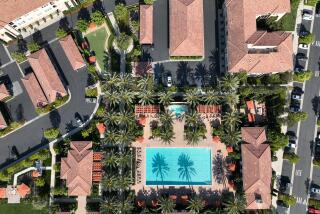Fire, the price we pay
Eight thousand years ago, the Tongva and Tataviam peoples, who made their homes in what we now call the Los Angeles Basin and the San Fernando and San Gabriel valleys, did exactly what many of us have been doing for the last few days: They inhaled the bone-dry air of a wind-scoured fall afternoon and watched the hillsides above them burn.
The smoky conflagrations they witnessed -- more than 5 millenniums before the first European sailed up the California coast -- were, even then, an annual ritual of nature so ancient and reliable that it had set its evolutionary stamp on the chaparral itself, giving rise to species of plants whose seeds require the heat of wildfires to germinate.
Then, as now, the sequence of events was the same. Santa Ana winds blowing off the high desert to the sea suck the moisture from the late season grasses, brush and light forest up-slope and turn them into tinder. A spark occurs. The first such fires were no doubt caused by lightning, though there’s evidence to show that the early Amerindians here, as in other parts of North America, often set fires themselves -- just as we now do, sometimes by accident, too often by design.
High winds spread the embers and, depending on the ground cover and gusts, burn until they reach a limit set by nature -- or, nowadays, by man through the mechanism of modern fire suppression.
What the Uto-Aztecan-speaking Tongva and Tataviam never had to put up with is the torrent of self-righteous abuse that now follows each fall’s wildfire season as inevitably as rain and mudslides.
The bigger the fire and the greater the losses, the higher the wave of rhetorical censure. Our annual struggle with wildfires inevitably looses a flood of essays on the essential hubris of unnatural Los Angeles, a city that insists on sprawling beyond its naturally appointed limits and on building where it ought never to build -- on hillsides, in canyons, on flood plains and at the seashore.
Arrogant defiance of nature, the argument goes, inevitably brings disaster -- and well-deserved disaster at that. (It’s interesting to recall that our worst single fire preceded urbanization. During the last week of September, the Great Fire of 1889 burned more than 300,000 acres in northern San Diego County and southern Orange County, killing thousands of sheep and destroying the unharvested barley crop.)
Putting aside for the moment the simple historical fact that our natural disasters -- earthquakes, floods and droughts, as well as fires -- predate development, there is another way to look at this. Alone among the world’s great cities, Los Angeles does not exist at the confluence of great rivers, on the shore of a fine natural harbor or astride some important traditional trade route. It never was the historical seat of some great power.
It exists because it has a magnificent climate and a fascinatingly beautiful natural setting, and because a bunch of ruthless, steely-eyed guys with their avarice on overdrive realized that they could get rich selling good weather and open space, if they willed a city into being.
They succeeded beyond even their counting-house fantasies; the result was Los Angeles, which is unique among the world’s great cities in that -- until the construction of Disney Hall and the Cathedral of Our Lady of the Angels -- it lacked a single inarguably distinguished public building but possessed the world’s finest store of fine domestic architecture.
The city that the newcomers made of the developers’ ambitions is preeminently a city of private lives rather than public spaces. It also is one in which people live more intimately intertwined with nature than any other urban population, though that intimacy exposes them to everything from wildfires to the odd hungry mountain lion.
Our sprawling suburbs -- the despair of generation after generation of enlightened planners -- also happen to provide the best lower-, middle- and working-class housing of any metropolis in the world. A detached house with a bit of garden to enjoy remains an unattainable dream for most of the globe’s population.
Dealing with the fires, floods and quakes that are part of this environment -- albeit on a scale unimagined in most other cities -- is part of the price we pay for reaping the very considerable day-to-day benefits, spiritual as well as economic, from this arrangement.
And if our sprawling suburbs look to many of us these days like simply way too much of a good thing, it’s worth recalling that the phrase only occurs to those who’ve already got theirs.
--
More to Read
Start your day right
Sign up for Essential California for news, features and recommendations from the L.A. Times and beyond in your inbox six days a week.
You may occasionally receive promotional content from the Los Angeles Times.






